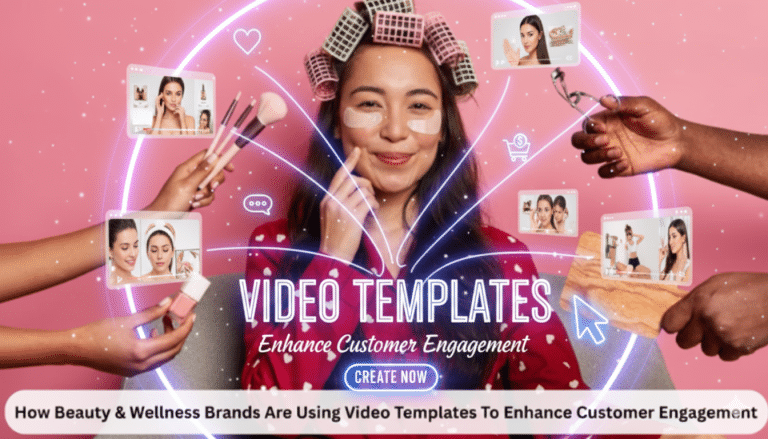
5 Common Social Media Planning Mistakes and How to Avoid Them
As a small business looking to grow, reach a new audience, and gain more customers, social media marketing is an absolute must. But balancing social media on top of all of your other responsibilities can be a challenge, especially with limited resources and small teams. That’s where social media planning comes in.
The practice of developing a strategy for creating and publishing social media content to help achieve business goals, social media planning is a lifesaver for anybody trying to efficiently achieve big results. It can save you time, stress, and energy while maximizing your progress on social media.
For anybody new to social media planning, there are certain mistakes that are easy to make that may derail you and stop you from getting the most out of this practice. To help you out, this article points out the five most common social media planning mistakes–and easy solutions to help you avoid them.
Social media mistakes (and solutions)
1. Lacking a clear strategy
The problem
Not knowing your target audience, social media goals, and working procedures before diving into social media planning is a big mistake. This is because one of the key elements of social media planning is building a strategy that you can apply that will help you work toward your goals. If you skip this step, you’ll only be getting a fraction of the results you’re looking for.
The solution
While you may be eager to get started with social media planning, it’s important to take some time beforehand to sit down and come up with a social media strategy. This is a one-time effort that will have a huge, long-lasting pay-off, making it very much worth the time.
The main elements of a social media marketing strategy include:
-
- Defining your goals and objectives – It’s crucial to create specific, measurable, achievable, relevant, and time-bound (SMART) goals for your social media that you will work toward. Possible goals include increasing brand awareness, driving website traffic, and generating leads or sales.
- Understanding a target audience – In order to create content that will resonate and engage them, you must identify your ideal customer or target audience, including their demographics, interests, pain points, and preferred social media channels.
-
- Building a content strategy – Decide in advance what type of content you want to make, as well as its format, frequency, and purpose. Be sure that this aligns with your goals, objectives, and target audience.
- Choosing social media channels – Pick the most relevant social media channels based on your target audience and content strategy, such as Facebook, Instagram, Twitter, LinkedIn, TikTok, etc.
- Brand voice and tone – Develop a consistent brand voice and tone that aligns with your brand’s values, personality, and target audience.
- Engagement strategy – Define how you will engage with your audience, including responding to comments and messages, running social media contests, and collaborating with influencers.
- Measuring results – Choose which metrics you will track and how in order to measure your performance. Possible KPIs include engagement rate, reach, click-through rate, conversions, and return on investment (ROI).
2. Not planning ahead
The problem
It’s called social media planning for a reason. In order to do it successfully, you must give yourself enough time to plan your social media posts in advance. If you don’t give yourself the time you need to properly plan ahead, you may experience unnecessary stress, wasted time, and an inconsistent brand voice.
On the other hand, if you do give yourself enough time, you’ll be more efficient, hit your posting schedule, and make friends with the social media algorithms that reward you for posting consistently.
The solution
At Promo, we’ve found that it’s best practice to plan all of your social media posts at least a week in advance. However, a full month may be even better if it’s accessible for you. This will give you plenty of time to apply your social media strategy, address any relevant upcoming holidays and occasions, and fill up your content calendar to meet your desired posting schedule.
Promo tip: To help you keep track of things and make sure you’re staying at least a week ahead of things, try Promo Planner. It’s designed to help you plan ahead.
3. Not using a content calendar
The problem
When you do social media planning, you end up coming up with and creating lots of content in advance. It’s crucial to have an effective system for organizing these ideas and posts so that you can easily find them. The industry standard tool for this is a content calendar, a schedule of planned content that you will create and publish over a specified period.
Not using a content calendar is a definite mistake, as it may lead to you losing important pieces of content or failing to properly visualize the full picture of your content ideation and creation processes.
The solution
There are many different options you can choose from to create a content calendar ranging from free and low-tech to much more advanced (and costly) dedicated content calendar software. Some options worth considering include:
-
- Spreadsheets – A simple spreadsheet, such as Google Sheets or Microsoft Excel, can be used to create a basic content calendar. The columns can include the date, topic, content type, channel, and status.
- Online work organization tools – Several online tools, such as Trello, Asana, and Airtable, provide customizable templates and drag-and-drop functionality for creating and organizing content calendars.
- Social media management tools – Many social media management tools, such as Hootsuite, Buffer, and Sprout Social, include content calendar features that allow users to schedule and publish social media posts across multiple platforms.
- Promo Planner – Our newest feature, Promo Planner, functions as a content calendar that perfectly integrates with our video maker for ease of use.
4. Posting too infrequently
The problem
When you start social media planning, you’ll have to decide how often you want to post on social media. And while we certainly encourage you to be realistic and not overstretch yourself, it’s also important to post frequently enough.
If you don’t post on your social media often enough, or post inconsistently (many posts on one week and none on other weeks), you’ll have a hard time making headway. This is because social media algorithms reward consistency and frequent posting, with each platform having its own “sweet spot.”
The solution
The ideal posting frequency for each social media platform can be seen in the chart below.
| Social Media Platform | Ideal Posting Frequency | Source |
| 2 feed posts per week and 2 stories per day | Head of Instagram Adam Mosseri | |
| Once a day to 5 times a month | Hubspot | |
| Once per day | LinkedIn’s guide for small businesses | |
| TikTok | 1 to 4 times per day | TikTok |
| YouTube | At least one video per week | YouTube Strategist Maria Concepcion Zabala |
Depending on the frequency you’re used to posting with, this may sound like a lot. But social media planning is just the practice that will help make it easier to make sure you have enough posts going up to feed the algorithms.
5. Not scheduling posts
The problem
If you’re not yet using a scheduling tool for social media, it’s highly recommended that you start. The time it takes to manually log into each of your social media accounts and post your content is an unnecessary waste of time when there are tools that will instantly do it for you. All you have to do is link the tool of your choice with your social media accounts and it’ll be able to schedule and publish your posts on your behalf.
The solution
Promo Planner can integrate with your social media accounts so you can schedule and post directly from Promo. This way, you can make your videos and immediately schedule them for publishing all from the same page, saving you a lot of time and making your social media marketing processes much more efficient.
Happy planning!
Social media planning is an essential tool for small businesses that want to grow. However, it’s important to avoid common mistakes such as lacking a clear strategy, not using a content calendar, and posting too infrequently.
By creating a social media strategy, using a content calendar, and pre-scheduling posts, businesses can successfully use social media to achieve their goals. With these tips, small businesses can save time, stress, and energy while maximizing their social media progress.



